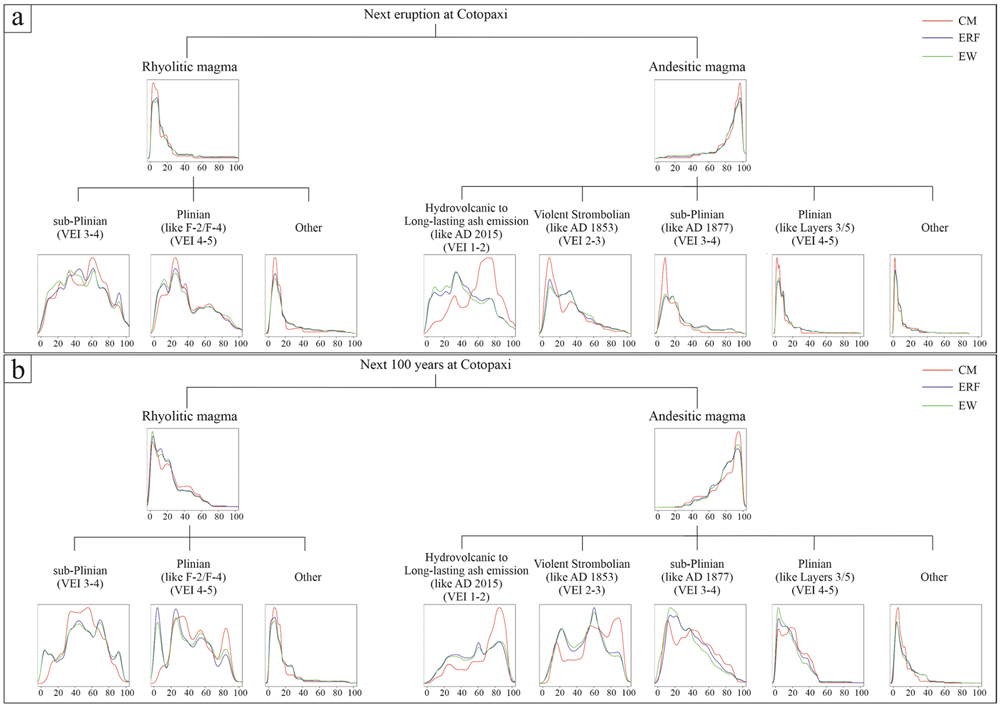Eruption type probability and eruption source parameters at Cotopaxi and Guagua Pichincha volcanoes (Ecuador) with uncertainty quantification

Tadini A., O. Roche, P. Samaniego, N. Azzaoui, A. Bevilacqua, A. Guillin, M. Gouhier, B. Bernard, W. Aspinall, S. Hidalgo, J. Eychenne, M. de’ Michieli Vitturi, A. Neri, R. Cioni, M. Pistolesi, E. Gaunt, S. Vallejo, M. Encalada, H. Yepes, A. Proaño & M. Pique (2021).
Bulletin of Volcanology, 83, 35, https://doi.org/10.1007/s00445-021-01458-z
Abstract
Future occurrence of explosive eruptive activity at Cotopaxi and Guagua Pichincha volcanoes, Ecuador, is assessed probabilistically, utilizing expert elicitation. Eight eruption types were considered for each volcano. Type event probabilities were evaluated for the next eruption at each volcano and for at least one of each type within the next 100 years. For each type, we elicited relevant eruption source parameters (duration, average plume height, and total tephra mass). We investigated the robustness of these elicited evaluations by deriving probability uncertainties using three expert scoring methods. For Cotopaxi, we considered both rhyolitic and andesitic magmas. Elicitation findings indicate that the most probable next eruption type is an andesitic hydrovolcanic/ash-emission (~ 26–44% median probability), which has also the highest median probability of recurring over the next 100 years. However, for the next eruption at Cotopaxi, the average joint probabilities for sub-Plinian or Plinian type eruption is of order 30–40%—a significant chance of a violent explosive event. It is inferred that any Cotopaxi rhyolitic eruption could involve a longer duration and greater erupted mass than an andesitic event, likely producing a prolonged emergency. For Guagua Pichincha, future eruption types are expected to be andesitic/dacitic, and a vulcanian event is judged most probable for the next eruption (median probability ~40–55%); this type is expected to be most frequent over the next 100 years, too. However, there is a substantial probability (possibly >40% in average) that the next eruption could be sub-Plinian or Plinian, with all that implies for hazard levels.


Devi effettuare l'accesso per postare un commento.